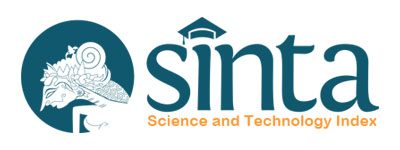The Concept of “Bebarengan†That Construct The Spatial Identity of Dinoyo Ceramic Village
Keywords:
Identity, Space, History, CeramicsAbstract
Dinoyo Ceramic Village of Malang City is a village that has distinctive community socio-cultural and economic characteristics. Almost all of the community of Dinoyo Ceramic Village work as ceramic makers and traders from generation to generation. Dinoyo Ceramic Village has a history well-known for its ceramic industry that has existed since the 1950s and supposedly the community ability to make ceramics has emerged since the days of the Kingdom of Kanjuruhan in the 8th century AD. This study aimed to reveal the space identity themes formed by physical and socio-economic elements and to disclose the concept of space identity or genius loci of Dinoyo Ceramic Village. This study used a descriptive explorative method with a narrative descriptive analysis technique. The results showed that the space identity themes constructed from the physical and socio-economic elements are “Jagongan†Space, “Bale†Space, “Bebarengan†Space, and “Dodolan†Space. “Bebarengan†is one of the space identity concepts in Dinoyo Ceramic Village. “Bebarengan†is defined as a unity or togetherness found in the terns of Activities, Performers, Space Quality, Elements, and Space Settings.Downloads
Published
2018-06-06
Issue
Section
Articles
License
Authors who publish with this journal agree to the following terms:- Authors retain copyright and grant the journal right of first publication with the work simultaneously licensed under a Creative Commons Attribution License that allows others to share the work with an acknowledgement of the work's authorship and initial publication in this journal.
- Authors are able to enter into separate, additional contractual arrangements for the non-exclusive distribution of the journal's published version of the work (e.g., post it to an institutional repository or publish it in a book), with an acknowledgement of its initial publication in this journal.
- Authors are permitted and encouraged to post their work online (e.g., in institutional repositories or on their website) prior to and during the submission process, as it can lead to productive exchanges, as well as earlier and greater citation of published work (See The Effect of Open Access).

















